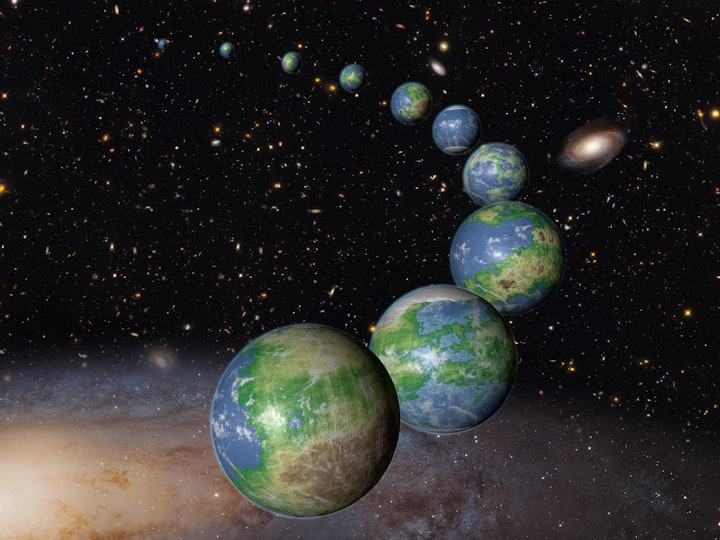On the Hunt For the Next Supernova
Robert Evans: The man who finds dying stars

How do you actually find a supernova - and what is that anyway?
A supernova is a dying star. Observing such an event from Earth is difficult and requires robust computer programs. However, this does not apply to this extraordinary man.
Robert Evans has tracked down 42 supernovae (plural of supernova) on paper with an ordinary telescope and star maps alone. What makes this achievement so unique is the subject of this article.
Observing such an event from Earth is difficult and requires robust computer programs. However, this does not apply to this extraordinary man: Robert Evans has tracked down 42 supernovae (plural of supernova) on paper with an ordinary telescope and star maps alone. What makes this achievement so unique is the subject of this article.
What is a supernova?
Astronomers speak of a supernova when a star breathes out its life in a gigantic explosion after it has used up its fuel.
The supernova thus marks the time of death of a star in the figurative sense. The energy radiated is unimaginable, and a sun that becomes a supernova can partly shine brighter than an entire galaxy. So you can say that stars die a pretty dramatic death.
After a star has been destroyed in a supernova, there are two possible end states: On the one hand, it can become a black hole or a pulsar. This end is found by stars that have at least eight times the mass of our sun.
On the other hand, sometimes there's nothing left. The latter happens when the supernova has emerged from a so-called "white dwarf." However, this scenario is quite rare. It only occurs in star systems in which a white dwarf in a binary system subtracts mass from a nearby star.
As soon as the white dwarf has subtracted so much mass from its companion that a specific limit is exceeded, it collapses under its own mass and triggers a nuclear fusion, which leads to an explosion and thus to the formation of a supernova.
However, by far not all stars in the universe end up as spectacular supernovas. Stars about the size of our sun and all those that are even smaller will find another end. They initially inflate into so-called "red giants" and finally eject most of their mass into space.
Again a white dwarf remains. If the star in question was not a double star, as is the case with our sun, then the white dwarf represents the final state. So our sun will end up a white dwarf, not a supernova.
How do you find a supernova?
Since stars have a life span of many billions of years, but a supernova is a sudden and short-lived event, the chance of pointing a telescope at the right place in the starry sky at precisely the right moment is similar to the probability of running against a tree in the Sahara.
The currently observable universe contains an estimated 50 billion galaxies. A galaxy the size of our Milky Way is home to about 300 billion stars.
Given these enormous numbers, supernovae are not to be expected at all rare, but with the massive expansion of the universe they can hide nevertheless quite well from us.
The only way to track down supernovae is to search large areas of the sky in a short period and compare the image material obtained with archive footage of the same areas.
Today it is possible to search several hundred galaxies per night and compare them with previous images of the same galaxies. However, this requires computer-controlled telescopes and powerful software for image analysis.
There are also many hobby researchers worldwide who have already discovered supernovae. The necessary software can be written by a talented programmer. Sufficiently powerful telescopes are freely available on the market. The reward of the effort is a little fame in the scientific community.
The Special Talent of Robert Evans - A Photographic Memory for Galaxies
Imagine Cinderella. The evil mother-in-law comes in, pours the famous lenses on the ground and orders the unfortunate to sort them.
She has no other choice but to pick up one lens after the other from the ground and sort it away.
Now imagine the evil mother-in-law would come back after five minutes. She looks at the chaos of the buried lentils and says: "Cinderella, you lazy thing. You've only picked up eleven lenses."
Sounds unlikely the evil mother-in-law could know that, doesn't it?
But Robert Evans now possesses exactly this talent. He manages to observe a good 200 galaxies in a single night, without a computer-aided telescope and without evaluation software, and to compare them with the star maps he has ahead of him. He does not miss the slightest deviation between his current observation and the archive material.
Evans has been a retired pastor since 1998. It may be surprising that a man of God has dedicated himself to astronomy, but for him, these two sides of life seem to go well together.
However, given the rapid pace of technology and the ever-increasing pace at which new celestial objects are being discovered today, we should not forget pioneers like Robert Evans. I hope this article will do my part to ensure that Evans continues to receive the attention and respect he deserves.
Receive weekly updates, and don’t miss any of my articles.
subscribe here http://bit.ly/ReneJunge
I confirm that I am the author of the article and that I have the relevant rights to submit this story to Vocal.
About the Creator
René Junge
Thriller-author from Hamburg, Germany. Sold over 200.000 E-Books. get informed about new articles: http://bit.ly/ReneJunge






Comments
There are no comments for this story
Be the first to respond and start the conversation.